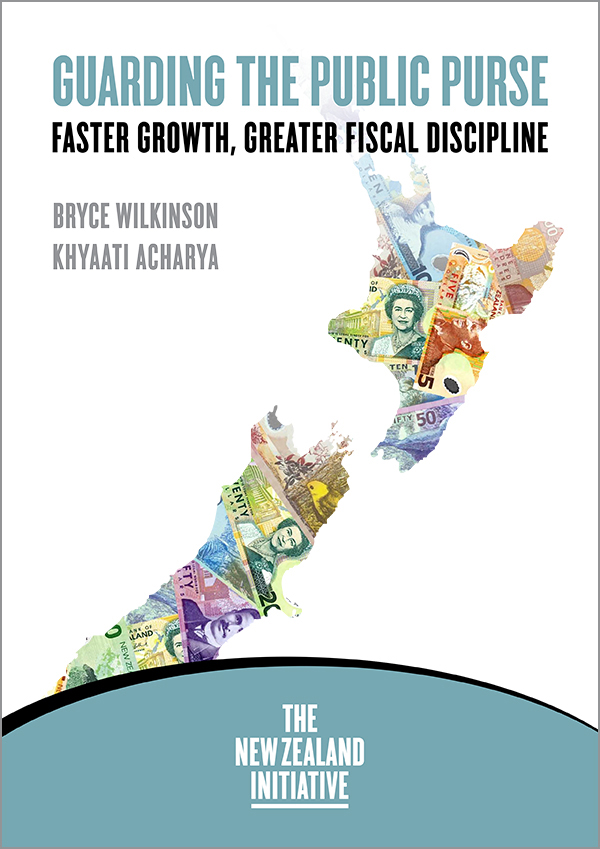Demographic aspects
Projections of an ageing population are robust on the basis of current trends:
- New Zealanders' 2010 median age of 35.8 years lifts to 43.0 years by 2060 under Statistics New Zealand's medium scenario projections. The number of dependent persons (under 15 or over 64) per 100 people of working age (15-64) is projected to rise by 44% from 50 in 2010 to 72 in 2060.
- Based on 2011 general election voting turnout records and these demographic projections, the population aged 60+ will comprise 37.6 percent of those eligible to vote in 2053-54, and could account for 50% of those actually voting; and
- New Zealand is not an outlier in these respects. Our 2010 median age is roughly comparable to that in Australia, China and the USA. Outliers include Japan and Germany where the median age already exceeds 43 years, and perhaps India where it is only 26 years.
Treasury's 2013 Fiscal Projections and policy options
Unlike the situation in much of Europe and the USA, New Zealand's fiscal situation is not dire, but it is fragile:
- Due to ageing alone, government spending on social welfare, including health and education, is plausibly projected to rise from 24.6% to 28.2% of GDP between 2011 and 2061 with the peak effect occurring around 2040 (by which time the post-World War II baby boomers are dead);
- Treasury projects an unsustainable public debt spiral before 2050 for New Zealand if government spending is allowed to rise at historical growth rates in conjunction with an ageing population and if tax revenues are capped at 29% of GDP; and
- To contain net core Crown public debt to 20% of GDP, Treasury projects that government needs to achieve ongoing annual operating balance surpluses (excluding net interest costs) of 1.7% of GDP between 2015 and 2060. That is a daunting target given New Zealand's patchy fiscal history.
Options Treasury raises for dealing with the fiscal challenges include raising GST, lowering tax thresholds, cutting the growth in health spending, raising the age for eligibility for New Zealand Superannuation (NZS) to 67 and linking it to the CPI rather than to wages.
Even so, projected fiscal outcomes depend markedly on future outcomes for unemployment, labour force participation and productivity growth. Policies that markedly improved outcomes in those respects would reduce the risks of an unsustainable debt spiral.
The importance of productivity growth
The faster the rate of growth in productivity growth the higher the income of future generations and the more affordable are given fiscal obligations. For example, using Treasury's projection models, GDP per capita in 2060 would be 22% higher (worth $22,000 per person in 2013-14 dollars) if trend productivity growth were 2% pa rather than 1.5% pa.
Productivity growth of 2% pa would produce sufficient revenue in Treasury's constrained spending model to fund projected aggregate primary government spending through to 2060 in the historical spending growth base case while keeping within the 20% net public debt target and holding tax revenues at 29% of GDP.
Ageing and slow productivity growth are not the only source of potential fiscal problems
Sustained fiscal discipline is implausible under current fiscal arrangements, independently of the ageing issue. New Zealand's existing fiscal rules, have important virtues, but only weakly guard against:
- Lack of transparency about the quality of general election campaign spending promises, both at the time or on implementation;
- Failures to reduce entrenched poor quality spending (eg interest-free student loans);
- The political impulse to spend cyclical revenue windfall gains; and
- Incentives to increase taxes by stealth through 'bracket creep' and inflation.
What could be done to ease fiscal pressures?
Policies to raise productivity growth should be added to Treasury's list (above). Productivity-increasing policies were canvassed extensively by the 2025 Taskforce. Lower effective marginal tax rates through better spending control and a flatter tax rate would help raise output per capita.
Productivity performance is troubling in health and education and much could be done to increase the role for competition and price discovery in those sectors. In particular New Zealand should learn from Singapore in health.
Fiscal rules and institutional transparency and monitoring agencies could be strengthened and enhanced respectively.
What should be done to ease fiscal pressures?
Should is a normative concept invoking consideration of liberty, efficiency of outcomes and fairness or equity. There are strong efficiency, fairness and equity arguments for a single rate of income tax at a low rate given the likelihood that progressive structures benefit those with middling incomes relative to those on the highest and lowest incomes. There are strong efficiency arguments for tax-based funding to provide public goods, technically defined. The equity case for a taxpayer-funded targeted welfare safety net is also strong.
Waste in government spending harms all New Zealanders, impairing liberty and efficiency. The case for well-designed rules and institutions to prevent wasteful spending is strong.
One policy difficulty is lack of transparency about the prevalence and costs of wasteful government spending.





